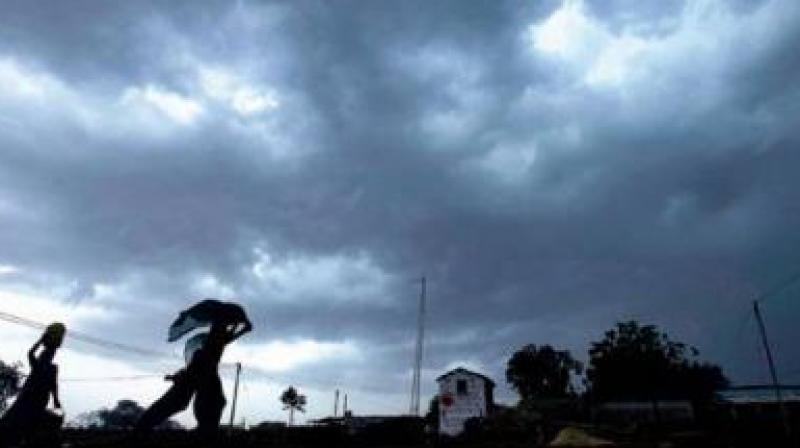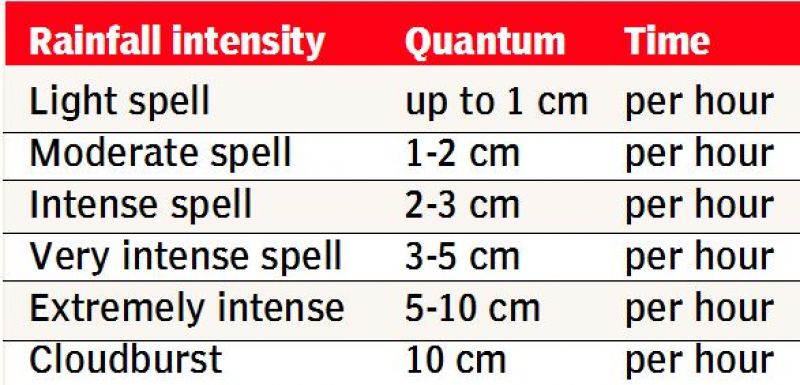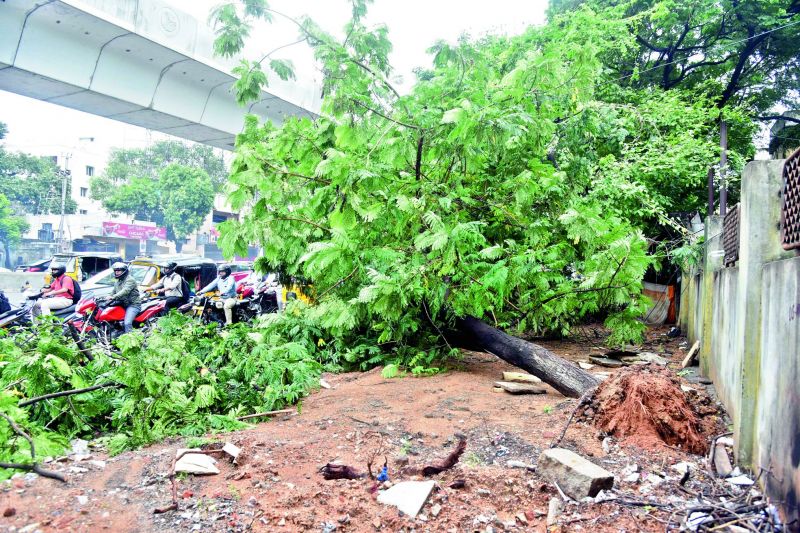High temperature and humidity may attract heavy rainfall, explain weather experts

Hyderabad: Ever wonder why a thunderstorm always strikes in the afternoon or evening hours? Answer: It needs the warm air and moisture that are present in the air at that time of day.
Thunderclouds are a local phenomenon and not always related to the monsoons. These clouds live for an hour or two at the most. The higher the clouds the more the intensity. If the thunderclouds are located eight kilometres or more above this means, the intensity of the rain, lightning and thunder will be greater.
The wind produced by these clouds can gust to 150 km per hour. It does not end with one thundercloud as the wind, pushed by the heavy rain, hits the ground and reverts back. It moves vertically upwards to form more thunderclouds and the rain continues. These thunderclouds need 20 minutes of humidity and air to burst.

The relative humidity in the city in the past few days has been 98 per cent, enough to build a thundercloud. “Rise in temperatures and humi-dity (moisture) are primary components for a thundercloud,” says we-ather bureau chief Y.K. Reddy.
“It begins with thunder accompanied by lightning and heavy rain. After one cloud goes off, more clouds will be developed around the same time. The high-intensity rainfall and gusty winds push the air to the ground, which reverts and moves vertically upwards, mixes with the moist air to give birth to a new cloud. Thunderclouds can form in a quick span of 20- 30 minutes.”
 Road dividers at TDP office – Jubilee hills and Care Hospital – Gachibowli were demolished to allow water to pass through the road. Traffic was held due to water stagnation.
Road dividers at TDP office – Jubilee hills and Care Hospital – Gachibowli were demolished to allow water to pass through the road. Traffic was held due to water stagnation.
Damage by thunderstorm
5 building/walls damaged.
60 people from Singadikunta basti rehabilitated at the community hall.
26 water stagnation points apart from water logging.
24 trees fell.
5 electric poles collapsed.
Warning by GHMC
- Heavy rains for the city up to October 5.
- Action against most dangerous dilapidated structures, inmates must vacate or carry out repairs or demolish it.
- Special attention in hilly areas of Banjara Hills and Jubilee Hills to be taken to avoid possible land slides and alert the people living in low lying areas.
- Action against old dilapidated compound walls, retaining walls.
- Vigil on dilapidated government school buildings
- No excavation of cellars. Strict action against violators.
- In case of already dug cellars, the builder or owner will be advised to take all standard safety precautionary measures like soil strengthening, nailing, and further excavation should be stopped.
- Notices to be displayed on dilapidated structures cautioning people not to move around and barricading to prevent public to enter.
Manic rain wasn’t a cloudburst: Indian metrological department, Hyderabad, director Y.K Reddy said a rainfall would be categorised as cloudburst only when a particular area receives a rainfall of 10 cm or more in one hour. “On Monday, the maximum rainfall recorded in a certain areas was 5 cm. So it cannot be called a cloudburst. In recent times, the city has been receiving extremely intense rainfall and not a cloudburst. The maximum rainfall the city received were during the 2000 floods,” he said.

